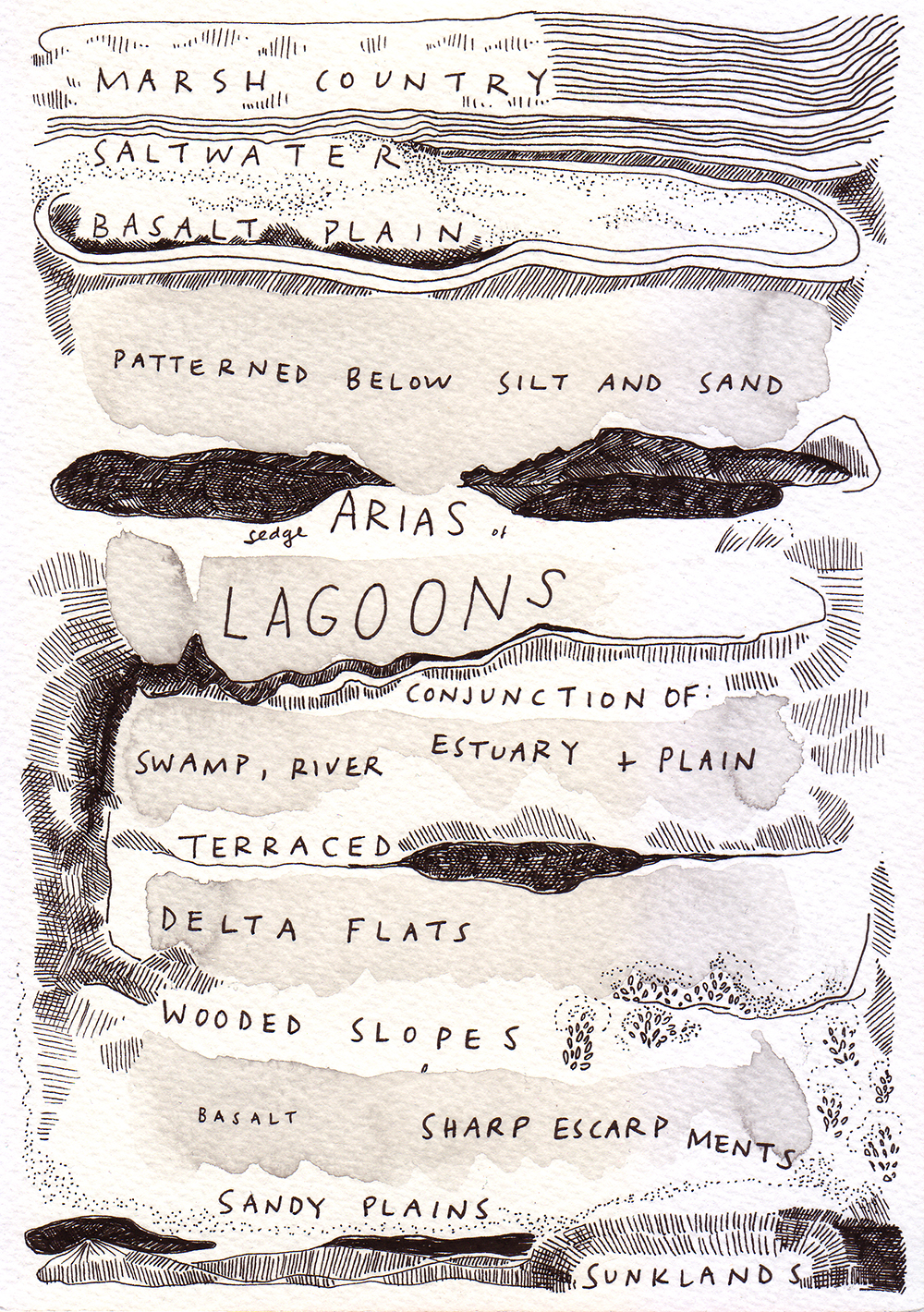
The Orbweavers | Walking West | ink and watercolour on paper | 2018
I have only walked home a couple of times from the city towards Footscray across the Lowlands. I usually travel by car or train. Walking revealed missed details: the 130-year-old tidal canal along Dynon Road, usually hidden from view; the lights of Footscray on higher basalt ground, an expanse of railyards glinting in mercury vapour light, the tang of saltwater coming off the Maribyrnong.
Walking further south along the river in Yarraville leads to what was once the centre of Victoria’s fertiliser industry from early settlement up until the 1980s. The river location was ideal for incoming bulk goods by ship and barge. One of the early industrial giants, Mount Lyell, used to burn iron pyrites – a copper-mining waste product – in their Yarraville plant in order to create sulfur dioxide used in superphosphate fertiliser. The toxic iron pyrite cinders were disastrously used as infill along the soft banks of the Yarra and Maribyrnong rivers (Fyfe; Chancellor).
To represent the disaster in our poem we used instances of rhyme. In the fifth stanza we write:
Brutal snake in wake of fertiliser sheds gabled tight, flaking pyrite,
The rhyme between ‘snake’ and ‘wake,’ as well as ‘tight’ and ‘pyrite’ forms a strategy to unsettle the reader: traditionally rhyme in poetry has often been present to contribute to the beauty of stanzas, yet here it is used to foreground the destructive nature of activities such as infilling river banks. The industrial activity of stabilising river banks if they are eroded (often accelerated by human industry) can be used to ‘beautify’ sections of river. Here the acts of beautification cause destruction, present in the materiality of the river system and the aesthetic practices of poem.
The Orbweavers: Moonee Moonee Chain of Ponds
The Orbweavers: Saltworks
The Orbweavers: Stony Creek
The Orbweavers: The Lowlands (West Melbourne Swamp)
The Orbweavers: Walking West









